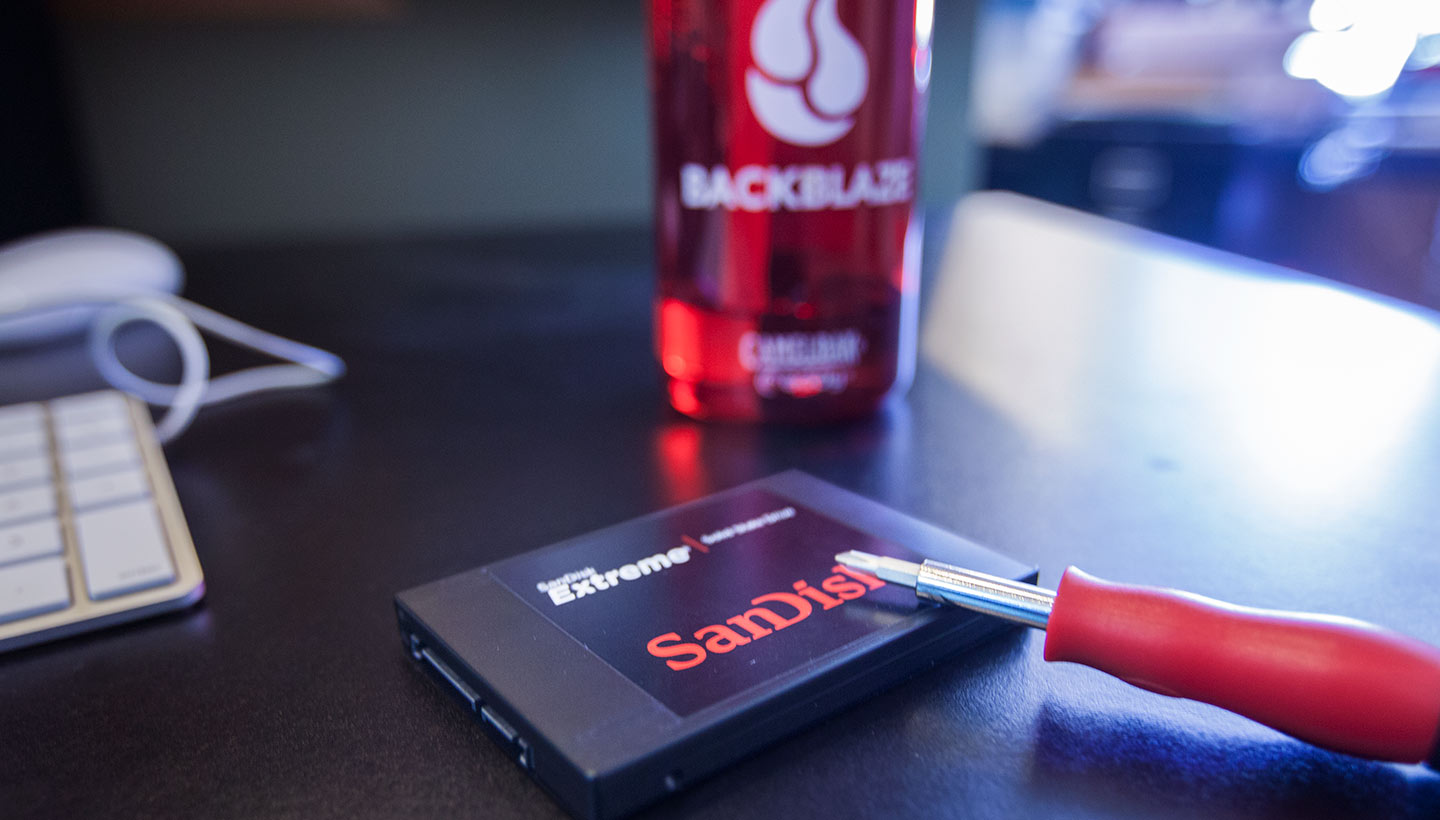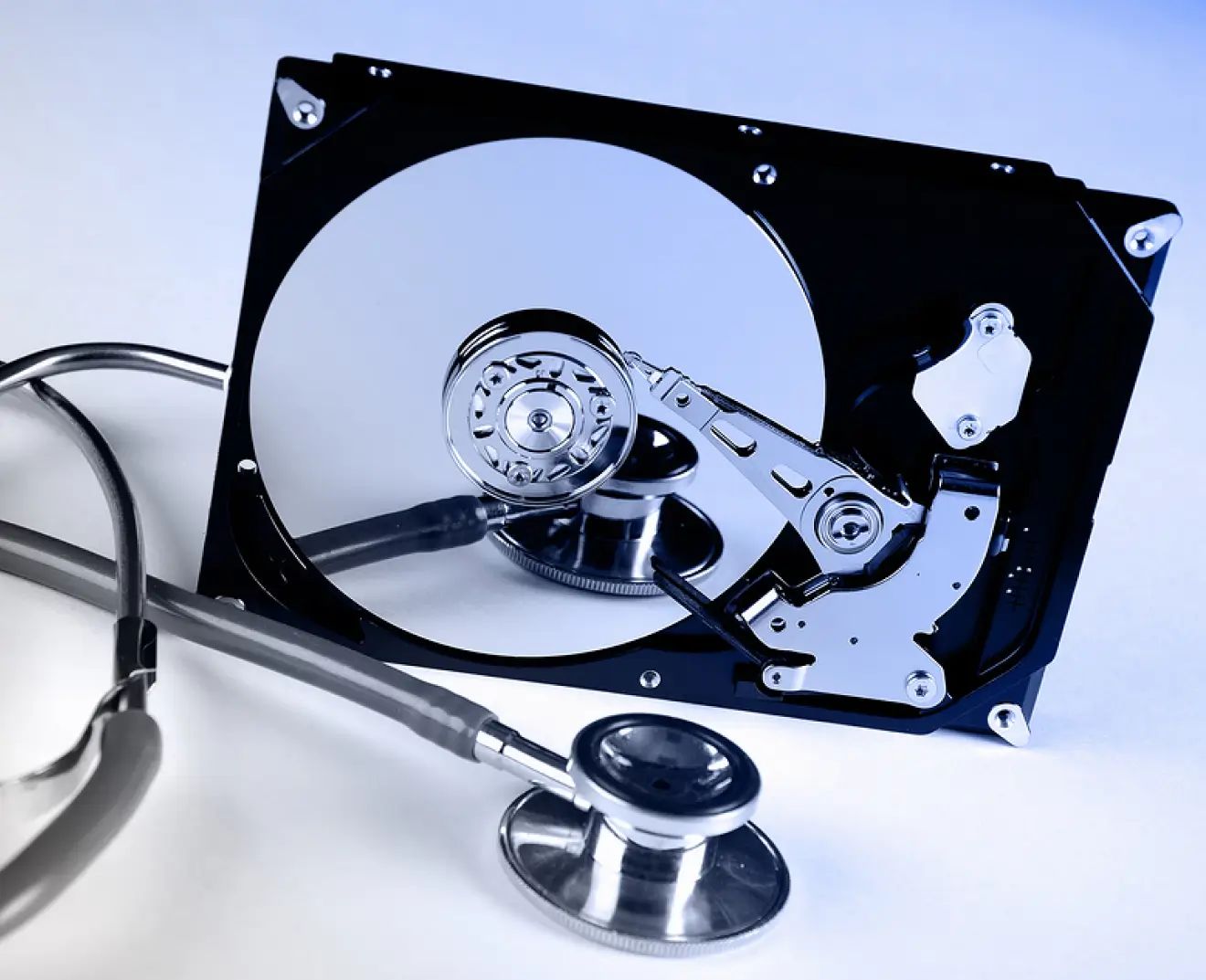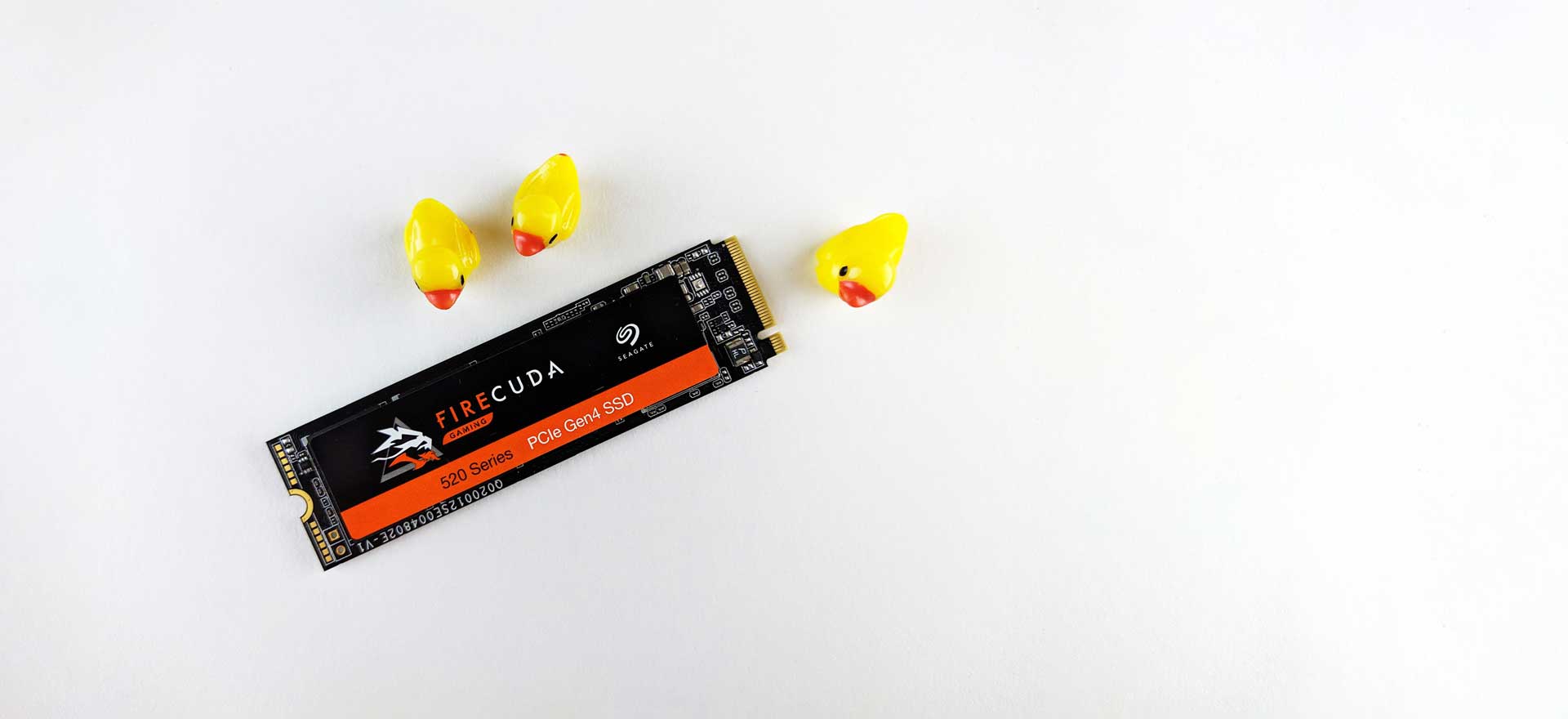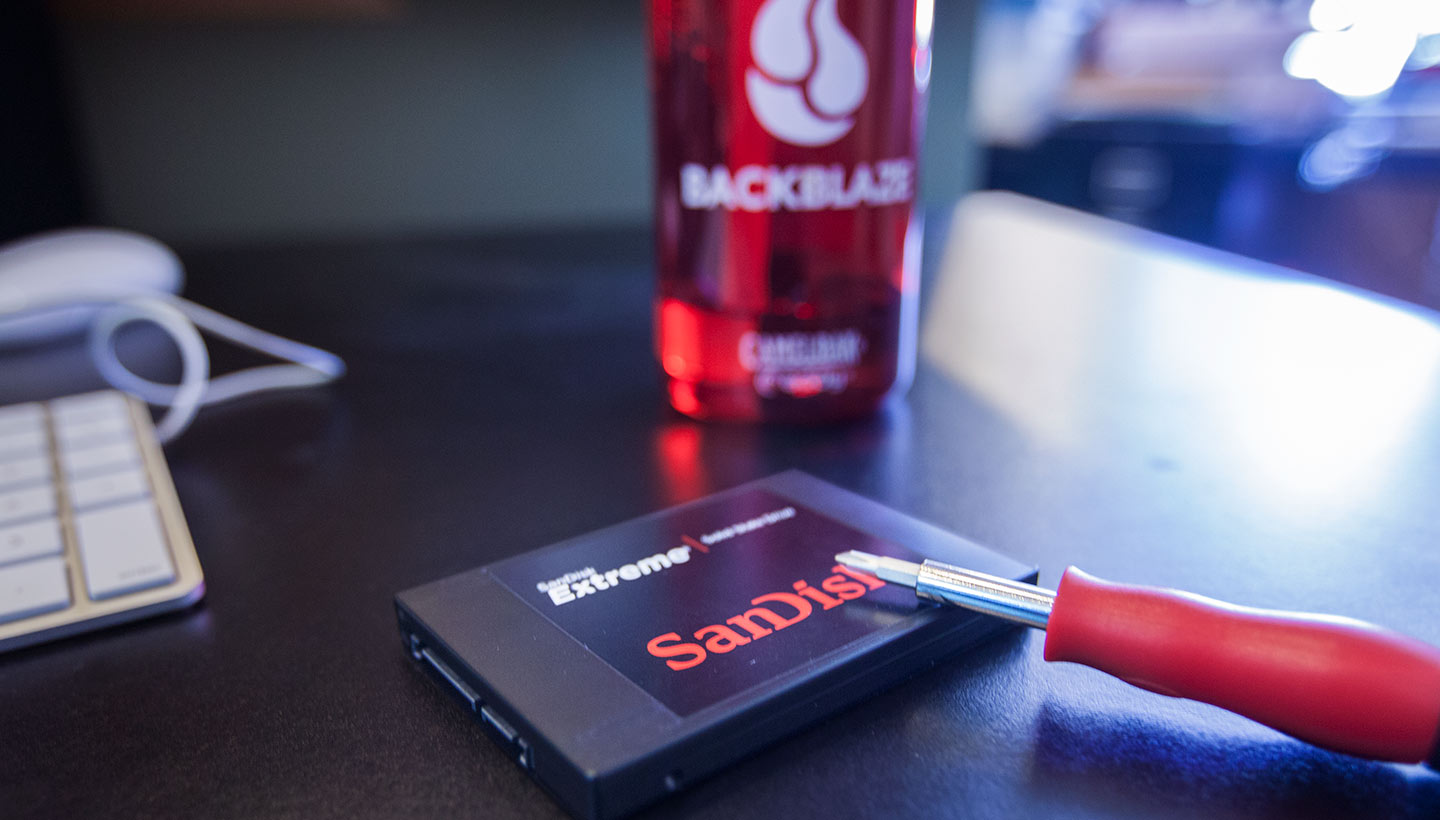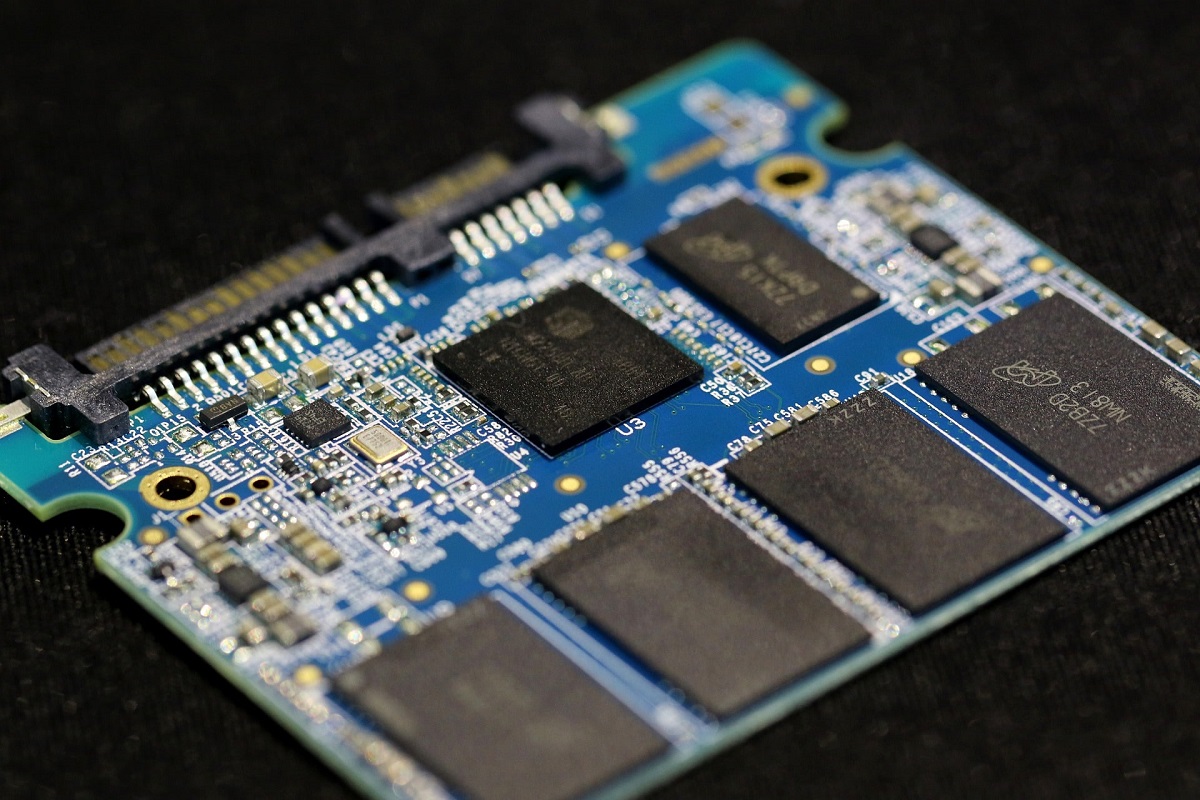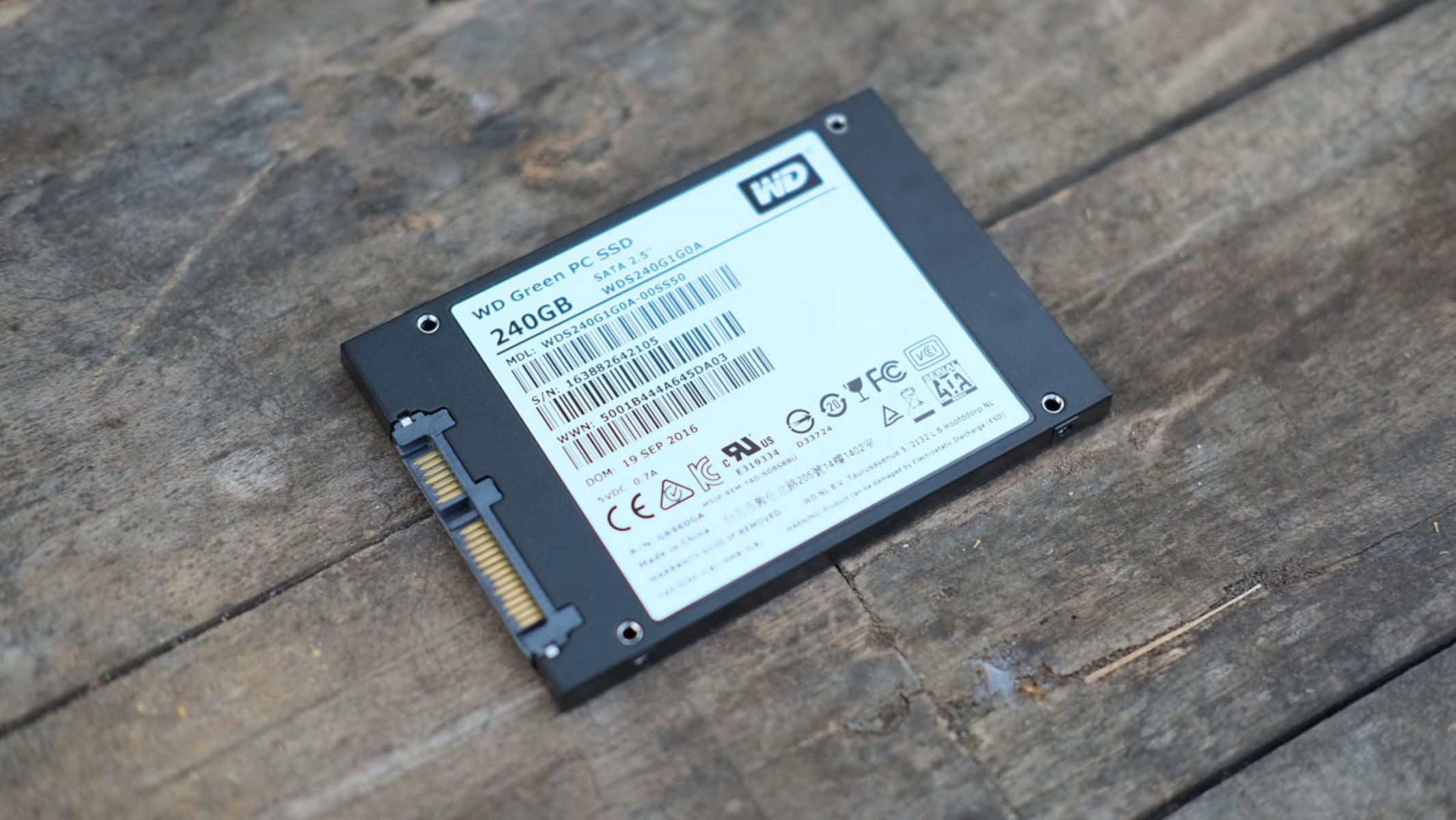Signs of a Bad SSD
A solid-state drive (SSD) is a crucial component in a computer system, providing fast and reliable storage for your data. However, just like any other electronic device, SSDs can experience issues over time. It’s important to be able to identify the signs of a failing or bad SSD to prevent data loss and ensure the proper functioning of your system.
Here are some common signs that may indicate a bad SSD:
- Slow Performance: One of the first signs of a failing SSD is a significant decrease in performance. If your computer takes longer to boot up, files and programs are slow to open, or there is noticeable lag during operations, it could be an indication that your SSD is deteriorating.
- Frequent and Unexpected Freezes or Crashes: If your computer freezes or crashes frequently, especially during disk-intensive tasks, it may be a result of a failing SSD. These freezes and crashes can interrupt your work and cause data loss, so it is essential to diagnose the issue promptly.
- Inability to Boot Up or System Not Recognizing the SSD: If your system fails to boot up or does not recognize the SSD, it can be a clear sign of a bad drive. This could be due to a faulty connection, corrupted firmware, or complete SSD failure.
- Unusual Noises Coming from the SSD: While SSDs are known for being silent, any strange noises such as clicking, grinding, or scratching sounds coming from the drive could indicate mechanical failure. It is important to back up your data immediately and consult a professional if you hear such noises.
- File Corruption or Missing Files: If you notice that files become corrupted or go missing without any explanation, it could be due to a failing SSD. As the SSD reaches its end of life, data integrity becomes compromised, leading to file errors and data loss.
- S.M.A.R.T. Errors or Warnings: Self-Monitoring, Analysis, and Reporting Technology (S.M.A.R.T.) is a built-in feature in modern SSDs. It monitors the health of the drive and alerts users to potential issues. If you receive S.M.A.R.T. errors or warnings, it is crucial to take immediate action to prevent further damage.
- Drive Not Being Detected in BIOS: If your SSD is not being detected in the BIOS settings, it could indicate a problem with the drive’s hardware or connectivity. Ensure that all cables are securely connected and try connecting the SSD to a different SATA port to determine if the problem persists.
- Overheating Issues: SSDs generate heat during operation, but if you notice that your SSD is excessively hot to the touch or experiencing frequent overheating issues, it may be a sign of a faulty or failing drive. Excessive heat can shorten the lifespan of the SSD and impact its performance.
- Sudden and Consistent Blue Screens of Death (BSOD): If your computer experiences frequent blue screens of death (BSOD) with error codes related to storage devices, it is likely that your SSD is faulty. These errors can be caused by bad sectors, firmware corruption, or other issues within the SSD.
- High Number of Bad Sectors Detected on the Drive: Bad sectors are areas on the SSD that cannot be read or written to, typically caused by physical damage. If you notice an increasing number of bad sectors being reported by disk checking tools, it could indicate a failing SSD.
Being aware of these signs can help you detect if your SSD is experiencing issues. If you notice any of these signs, it is important to back up your data immediately and consult a professional for further assistance and potential replacement of the SSD.
Slow Performance
One of the prominent signs indicating a bad SSD is a noticeable decrease in overall performance. If you find that your computer is taking longer to boot up, programs and files are slow to open, or there is a significant lag during operations, it could be an indication that your SSD is deteriorating.
There are several reasons why an SSD might experience slow performance:
- Age and Wear: Over time and with constant use, an SSD’s performance can degrade. The NAND flash memory cells that store data can wear out, leading to slower read and write speeds. This can result in a decreased overall performance and responsiveness of the drive.
- Fragmentation: Similar to traditional hard drives, SSDs can become fragmented over time. As files are added, deleted, and modified, the data becomes scattered across the drive, causing slower access times. While SSDs are generally more resistant to fragmentation compared to mechanical hard drives, it can still contribute to slower performance over time.
- Overheating: Excessive heat can impact the performance and lifespan of an SSD. When an SSD overheats, it can throttle its speed to prevent damage. This can lead to slower read and write speeds and a decrease in overall performance.
- Software Issues: Outdated firmware or drivers can also contribute to slow performance. It is important to regularly update the firmware and drivers of your SSD to ensure optimal performance and compatibility with your system.
To address slow performance issues, there are several steps you can take:
- Check TRIM Support: TRIM is a command that allows the operating system to inform the SSD which blocks of data are no longer in use and can be erased. Ensure that your SSD and operating system support TRIM, as it helps maintain optimal performance and prevents performance degradation.
- Free up Storage Space: SSDs tend to perform better when they have sufficient free space. If your drive is nearly full, consider deleting unnecessary files or moving them to an external storage device to free up space.
- Defragmentation: While SSDs do not require regular defragmentation like traditional hard drives, it can help optimize the drive’s performance if done sparingly. Use a reputable defragmentation tool that is specifically designed for SSDs to maintain optimal performance.
- Monitor SSD Temperature: Keep an eye on the temperature of your SSD. If it consistently runs hot, ensure that it is properly cooled by optimizing airflow within your computer case. You can also use software utilities to monitor and control the temperature of your SSD.
- Update Firmware and Drivers: Regularly check for firmware and driver updates for your SSD. Manufacturers often release updates to address performance issues and enhance compatibility with the latest hardware and software.
If slow performance persists despite these steps, it may be an indication that your SSD is reaching the end of its lifespan or experiencing hardware failure. In such cases, it is advisable to back up your data immediately and consult a professional for further assistance and potential replacement of the SSD.
Frequent and Unexpected Freezes or Crashes
If you frequently experience freezes or crashes on your computer, especially during tasks that involve heavy disk usage, it could be a sign of a failing SSD. These freezes and crashes can interrupt your work, lead to data loss, and indicate underlying issues with the drive.
Here are some possible reasons why you might encounter frequent freezes or crashes:
- Faulty Controller: The controller is responsible for managing data flow between the computer and the SSD. If the controller malfunctions, it can cause the drive to freeze or crash. This can be due to a defect in the controller chip or a compatibility issue with your system.
- Bad NAND Cells: Over time, individual NAND flash memory cells within the SSD can become faulty or fail completely. As a result, data cannot be properly read or written, leading to freezes or crashes during disk-intensive operations.
- Insufficient Power Supply: SSDs require a stable power supply to function correctly. If your power supply is inadequate or inconsistent, it can cause the drive to freeze or crash. Make sure your power supply is sufficient for your system’s requirements.
- Software Conflicts: Conflicts between your operating system, drivers, and installed applications can cause the SSD to freeze or crash. Outdated or incompatible software can disrupt normal SSD operations and lead to system instability.
To troubleshoot frequent freezes and crashes, consider the following steps:
- Check Connections: Ensure that all connections between the SSD and your system are secure. Loose cables or improper connections can result in intermittent freezes or crashes. Also, verify that the SATA ports and cables are in good condition.
- Update Firmware and Drivers: Keeping your SSD firmware and drivers up to date is crucial for stability and compatibility. Visit the manufacturer’s website to check for any available updates and install them accordingly.
- Scan for Malware: Malware or viruses can cause system instability, including frequent freezes or crashes. Run a comprehensive malware scan using reputable antivirus software to detect and remove any potential threats.
- Check for Overheating: Overheating can cause an SSD to freeze or crash. Ensure that your system’s cooling system, including fans and heat sinks, is functioning properly. Clean any dust build-up that may obstruct airflow and monitor the temperature of your SSD using software utilities.
- Perform a Clean OS Installation: If software conflicts are suspected, performing a clean installation of your operating system can help eliminate potential conflicts. Backup your data and reinstall the operating system from scratch to ensure a fresh start.
If the frequent freezes or crashes persist after trying these steps, it is a strong indication that your SSD may be failing. Back up your important data immediately, consult a professional for further assistance, and consider replacing the SSD to avoid data loss and system instability.
Inability to Boot Up or System Not Recognizing the SSD
If your computer fails to boot up or does not recognize the presence of the SSD, it can be a clear sign of a bad drive. In such situations, it is crucial to diagnose the issue promptly to prevent data loss and ensure the proper functioning of your system.
Here are some potential causes for the inability to boot up or the system not recognizing the SSD:
- Faulty Connection: A loose or faulty connection between the SSD and the motherboard can prevent the system from properly detecting the drive. Check that the SATA cable connecting the SSD to the motherboard is securely plugged in and not damaged. Additionally, try connecting the SSD to a different SATA port to determine if the issue lies with the port.
- Corrupted Firmware: Corruption in the SSD’s firmware can cause it to become unresponsive or unrecognized by the system. This can occur due to power surges, improper shutdowns, or other factors. Updating the firmware of the SSD, if possible, or seeking professional assistance may resolve the issue.
- Complete SSD Failure: In some cases, the SSD may have experienced complete failure, rendering it unusable. This can happen due to various factors such as component wear, electrical issues, or manufacturing defects. Unfortunately, if the SSD has failed, data recovery may be difficult or impossible.
- Incompatibility: Certain SSD models may have compatibility issues with specific motherboards or systems. In such cases, the system may fail to recognize the SSD or encounter errors during the boot process. Checking the manufacturer’s compatibility list or seeking technical support can help address compatibility-related issues.
To troubleshoot the inability to boot up or the system not recognizing the SSD, you can try the following steps:
- Check BIOS Settings: Access the BIOS settings of your computer and verify that the SSD is listed as a detected drive. If it is not listed, try resetting the BIOS to default settings, updating the BIOS firmware, or enabling any relevant settings for the SSD such as AHCI mode.
- Test SSD on Another System: If possible, connect the SSD to another system to see if it can be recognized. If the SSD functions properly on a different system, it could indicate an issue with your current system’s configuration or motherboard.
- Replace SATA Cables: Faulty SATA cables can impede proper communication between the SSD and the motherboard. Consider replacing the SATA cable with a new one to rule out cable-related issues.
- Consult a Professional: If none of the above steps resolve the issue, it is advisable to seek professional assistance. Data recovery specialists or SSD repair services may be able to diagnose and potentially recover data or repair the SSD.
If the SSD remains unrecognized after trying these steps, and you have important data stored on the drive, it is crucial to consult a professional data recovery service. They can assist in recovering data from the faulty SSD or guide you through the process of replacing the drive to resume normal system functionality.
Unusual Noises Coming from the SSD
While solid-state drives (SSDs) are generally known for their silent operation, any strange noises emanating from the SSD can be a cause for concern. Unusual noises can indicate mechanical issues or component failure within the SSD, and it is essential to address these problems promptly to prevent data loss and further damage to the drive.
Here are some types of unusual noises that may come from a failing SSD:
- Clicking: Clicking sounds coming from the SSD can be a sign of a mechanical failure. It may suggest issues with the read/write head or other moving parts within the drive. Clicking noises can be an indication that the drive is reaching the end of its lifespan or that there are physical damages to the internal components.
- Grinding: Grinding noises typically occur due to physical contact between moving parts within the SSD. This could be a result of worn-out components or misalignment of internal gears. Grinding noises are critical indicators of mechanical damage and should not be ignored.
- Scratching: If you hear scratching or scraping noises, it could suggest that the read/write head is coming into contact with the surface of the SSD’s platters. This contact can cause severe damage to the drive and lead to data loss. Scratching sounds require immediate attention to prevent further harm to the SSD.
- Whirring or Buzzing: Whirring or buzzing sounds may indicate that the motor or fan within the SSD is experiencing issues. There could be a problem with the bearings or other internal components. These noises can lead to overheating and performance degradation if not addressed promptly.
If you notice any unusual noises coming from your SSD, follow these steps to address the issue:
- Back up Your Data: Before taking any further action, it is crucial to back up your important data from the failing SSD. This ensures that you have a copy of your files in case the drive completely fails or requires repairs.
- Check Connections: Make sure that all connections between the SSD and your computer are secure. Loose or faulty connections can cause noise issues. Check the SATA cable and power connections to ensure they are properly seated and not damaged.
- Isolate the Noise: Confirm that the noise is specifically coming from the SSD and not from any other component in your system. Listen closely to pinpoint the exact source of the noise and determine if it is originating from the SSD itself.
- Consult a Professional: If you hear any unusual noises from your SSD, it is advisable to consult a professional technician or the manufacturer’s support team. They can assess the situation, diagnose the problem, and provide guidance on the necessary course of action.
It is important not to ignore or attempt to fix the unusual noises yourself, as improper handling can worsen the problem or result in data loss. Seek professional assistance to ensure the best possible outcome for your SSD and data integrity.
File Corruption or Missing Files
Experiencing file corruption or missing files can be a distressing indication of a failing solid-state drive (SSD). When files become corrupted or go missing without any apparent reason, it is vital to address the issue promptly to prevent permanent data loss and restore the integrity of your files.
Here are some possible causes of file corruption or missing files on an SSD:
- Data Integrity Issues: As an SSD reaches its end of life or encounters physical or logical problems, the integrity of stored data can become compromised. This can result in file corruption, where the data within the files becomes unreadable or inconsistent.
- Bad Sectors: Bad sectors are areas on the SSD that are no longer capable of storing data reliably. These can occur due to wear and tear, flaws in manufacturing, or other physical damage. Files stored within bad sectors may become corrupted or inaccessible.
- Inadequate Power Supply: An unstable or insufficient power supply to the SSD can lead to data corruption. Power outages, voltage fluctuations, or a failing power supply unit (PSU) can cause errors during data read or write operations, leading to corrupted files.
- Firmware Issues: Outdated firmware or a firmware glitch in the SSD can cause file system errors and result in file corruption or loss. Firmware updates from the SSD manufacturer may provide fixes for known issues and improve compatibility with your system.
To address file corruption or missing files on your SSD, consider the following steps:
- Backup Your Data: Before attempting any file recovery or repair actions, it is crucial to back up your important files to a separate storage device. This ensures that you have a copy of your files in case of further data loss or unsuccessful recovery attempts.
- Scan for File System Errors: Use built-in tools like CHKDSK on Windows or Disk Utility on macOS to scan and repair file system errors on the SSD. These tools can detect and fix issues that can lead to file corruption or missing files.
- Use Data Recovery Software: If files are already missing or inaccessible, data recovery software specifically designed for SSDs may help recover corrupted or deleted files. These tools scan the SSD and attempt to retrieve files that are still recoverable.
- Check Power Supply: Verify that your power supply is stable and sufficient for your system’s requirements. Consider replacing the power supply unit (PSU) if it is aging or showing signs of failure.
- Update SSD Firmware: Check the manufacturer’s website for any available firmware updates for your SSD. These updates often address bugs and improve stability, which can help prevent file corruption or loss.
If the file corruption or missing file issues persist or if you are unable to recover your important data, it is recommended to consult a professional data recovery service. They have specialized tools and expertise to handle complex SSD issues and may be able to recover your files or provide further advice on the best course of action.
S.M.A.R.T. Errors or Warnings
S.M.A.R.T. (Self-Monitoring, Analysis, and Reporting Technology) is a built-in feature present in modern solid-state drives (SSDs) that monitors the health and performance of the drive. When an issue or potential problem is detected, S.M.A.R.T. will generate error messages or warnings indicating the specific nature of the problem. It is essential to pay attention to these warnings to ensure the ongoing functionality of your SSD.
Here are some common S.M.A.R.T. errors or warnings you may encounter:
- Unreliable Blocks: S.M.A.R.T. may identify that certain blocks or areas of the SSD are becoming unreliable. This warning indicates that data stored in those blocks may be at risk of corruption or loss. It is crucial to address this issue promptly to prevent any data-related problems.
- Excessive Bad Sectors: Bad sectors are areas on the SSD that cannot be read from or written to. S.M.A.R.T. may report an increasing number of bad sectors, which can be a sign of failing or deteriorating flash memory cells. A higher number of bad sectors can lead to data loss and overall drive failure.
- High Temperature: S.M.A.R.T. can detect excessive temperature readings from the SSD. If the drive consistently operates at high temperatures, it may indicate a problem with the cooling system or inadequate airflow within the computer case. High operational temperatures can negatively impact the lifespan and performance of the SSD.
- Unexpected Power Loss: The sudden loss of power to the SSD, such as during a power outage or system crash, can trigger an error or warning. This can indicate potential data loss or file system corruption. It is important to properly shut down or use an uninterruptible power supply (UPS) to prevent sudden power loss.
If you receive S.M.A.R.T. errors or warnings, it is important to take the following steps to address the issue:
- Backup Your Data: Before attempting any troubleshooting or repair actions, it is crucial to back up your important data from the SSD. This ensures that you have a copy of your files in case of further data loss or unsuccessful recovery attempts.
- Check S.M.A.R.T. Details: Access the S.M.A.R.T. data of your SSD through specialized software or utilities. Examine the specific error or warning messages and pay attention to the attributes associated with the reported issues. Understanding the details can help in diagnosing the problem accurately.
- Monitor and Compare the S.M.A.R.T. Values: Regularly monitor the S.M.A.R.T. attributes of your SSD and compare them to previously recorded values. If you notice any significant changes or deteriorating values, it may indicate an ongoing problem that requires attention.
- Consult the Manufacturer: If you are unsure about the meaning of the S.M.A.R.T. errors or warnings or if you need further assistance, contact the manufacturer’s support team. They can provide specific guidance based on the error code or alert message.
- Consider Replacing the SSD: In cases where S.M.A.R.T. consistently reports critical errors or warnings, or if the drive’s performance significantly deteriorates, it may be a sign that the SSD is failing. In such situations, it is advisable to replace the SSD to avoid data loss and ensure the reliability of your storage solution.
Monitoring and addressing S.M.A.R.T. errors or warnings promptly can help detect potential SSD issues before they escalate, ensuring the longevity and reliability of your storage device.
Drive Not Being Detected in BIOS
If your solid-state drive (SSD) is not being detected in the basic input/output system (BIOS) of your computer, it can be a frustrating and worrying issue. When the system fails to recognize the presence of your SSD, it can indicate a variety of potential problems that require attention to ensure proper functionality and data accessibility.
Here are some possible causes for the drive not being detected in the BIOS:
- Loose or Faulty Connections: A loose or faulty connection between the SSD and the motherboard can prevent the BIOS from detecting the drive. Ensure that the SATA cables connecting the SSD to the motherboard are securely plugged in at both ends and not damaged. Additionally, try connecting the SSD to a different SATA port to rule out potential port-related issues.
- Incompatible BIOS Settings: The BIOS settings may not be properly configured to recognize the SSD. Check the BIOS settings and ensure that the SATA mode is correctly set to AHCI (Advanced Host Controller Interface) or RAID (if applicable) to enable the detection of the SSD. Also, verify that the SATA ports are enabled and not disabled in the BIOS settings.
- Outdated BIOS: An outdated BIOS may lack support for newer SSD models, resulting in detection issues. Visit the manufacturer’s website for your computer or motherboard and check for any available BIOS updates. Updating the BIOS to the latest version can often resolve compatibility issues and improve SSD recognition.
- Hardware or Firmware Conflict: In some cases, there may be a hardware or firmware conflict preventing the SSD from being detected. This can occur when components or firmware versions are not compatible with each other. Consult the manufacturer’s documentation, support resources, and user forums to check for any known conflicts or solutions.
To troubleshoot the issue of your SSD not being detected in the BIOS, consider the following steps:
- Check Connections: Ensure that all connections between the SSD and the motherboard are secure. Reconnect the SATA cables at both ends, ensuring a snug fit. Also, check for any visible damage to the cables and replace them if necessary.
- Reset BIOS Settings: Resetting the BIOS to its default settings can sometimes resolve detection issues. Locate the option to “Reset to Default” or “Load Optimized Defaults” in the BIOS setup menu and apply the changes. Save and exit the BIOS, then check if the SSD is now being recognized.
- Update BIOS Firmware: If your BIOS firmware is outdated, visit the manufacturer’s website and download the latest firmware update for your specific motherboard model. Follow the instructions provided by the manufacturer to update the BIOS firmware, and then check if the SSD is detected.
- Try a Different SATA Port and Cable: If available, connect the SSD to a different SATA port on the motherboard and replace the SATA cable. This helps rule out potential issues with the SATA port or cable itself.
- Seek Professional Help: If the above steps do not resolve the issue, it may be necessary to seek assistance from a professional technician or the manufacturer’s support team. They can provide further troubleshooting guidance specific to your system’s configuration and offer solutions tailored to your situation.
If the SSD continues to be undetected in the BIOS, it is crucial to reach out to technical support as it may indicate a hardware-related problem or an issue specific to your system’s configuration. Timely attention and resolution will ensure the proper functioning of your SSD and prevent data loss or system instability.
Overheating Issues
Overheating can be a significant concern when it comes to solid-state drives (SSDs). While SSDs generate less heat compared to traditional hard drives, excessive heat can still negatively impact their performance, lifespan, and the overall stability of your computer system. It is essential to address overheating issues promptly to ensure optimal SSD functioning and mitigate the risk of data loss.
Here are some common causes of overheating in SSDs:
- Inadequate Cooling: Insufficient airflow within your computer case can lead to the accumulation of heat around the SSD and other components. If your computer system lacks proper ventilation or the cooling fans are not functioning optimally, it can cause the SSD to overheat. Additionally, if the SSD is installed in close proximity to a heat-generating component, such as the CPU or GPU, it can further contribute to overheating.
- Dust Accumulation: Dust can accumulate on the surface of the SSD and obstruct the airflow through the device. Over time, this can lead to a buildup of heat and cause the SSD to operate at higher temperatures.
- Improper Use of Thermal Pads: Some SSDs come with thermal pads or heat spreaders that help dissipate heat. However, if these thermal pads are not installed correctly or are missing, it can impede heat dissipation and result in overheating.
- High Ambient Temperatures: Operating your computer system in an environment with high ambient temperatures can contribute to SSD overheating. It is important to ensure that the room or area where your computer is located is adequately cooled to maintain a stable temperature.
To address overheating issues with your SSD, follow these steps:
- Improve Airflow: Ensure that your computer’s cooling system is functioning optimally. Clean any dust or debris on the cooling fans, heat sinks, and air vents. Consider installing additional case fans or optimizing the arrangement of existing fans to improve airflow around the SSD.
- Check SSD Placement: Verify that the SSD is correctly positioned within your computer case. If it is in direct contact with a heat-generating component, consider relocating it to a cooler area. If applicable, ensure that any thermal pads or heat spreaders are installed correctly on the SSD for effective heat dissipation.
- Monitor SSD Temperature: Utilize software utilities to monitor the temperature of your SSD. Keep an eye on the temperature readings during normal usage and heavy workloads. If the temperature consistently exceeds the manufacturer’s recommended operating range, take steps to cool the SSD further.
- Optimize System Cooling: Consider other measures to improve overall system cooling. These may include cleaning the computer case, reorganizing cables for better airflow, using thermal compounds or thermal pads between heat-generating components, and ensuring that the computer’s intake and exhaust vents are unobstructed.
- Reduce Ambient Temperatures: If your computer system is operating in a high-temperature environment, consider using air conditioning or fans to lower the ambient temperature. This will help maintain a cooler environment for your computer and SSD.
By taking these steps to address overheating issues, you can improve SSD performance and extend its lifespan. Maintaining proper cooling is essential to ensure the stability and reliability of your SSD, as well as prevent potential data loss and system instability.
Sudden and Consistent Blue Screens of Death (BSOD)
A sudden and consistent appearance of the Blue Screen of Death (BSOD) can be a frustrating and alarming symptom of underlying issues with your solid-state drive (SSD). The BSOD is a critical system error that forces your computer to shut down to prevent further damage. When these blue screens occur regularly, it is crucial to investigate the potential SSD-related causes to ensure the stability and reliability of your system.
Here are some possible reasons for the sudden and consistent occurrence of BSOD related to SSD issues:
- Bad Sectors: The presence of bad sectors on the SSD can lead to data read or write errors, causing system crashes and triggering the BSOD. Bad sectors can occur due to wear and tear, manufacturing defects, or physical damage to the drive.
- Firmware Corruption: Corrupted firmware on the SSD can lead to instability and unexpected system crashes. Firmware corruption can occur due to power surges, improper shutdowns, or other factors. It is important to keep your SSD’s firmware up to date to minimize the risk of firmware-related BSOD errors.
- Driver Incompatibility: Outdated or incompatible drivers related to your SSD can cause system conflicts and result in blue screen errors. This can occur when the SSD drivers do not work well with the operating system or other hardware drivers in your system.
- Hardware Connection Issues: Loose or faulty connections between the SSD and the motherboard can cause intermittent system crashes. It is essential to ensure that the SATA cables connecting the SSD are securely and properly seated.
To address sudden and consistent BSOD errors related to your SSD, consider the following steps:
- Update Firmware and Drivers: Verify that your SSD has the latest firmware version installed. Check the manufacturer’s website for any available firmware updates. Additionally, update the SSD drivers and other related drivers, such as storage controller drivers, to ensure compatibility and stability with your system.
- Check for Bad Sectors: Run disk checking tools provided by your operating system, such as CHKDSK on Windows or Disk Utility on macOS, to scan for and fix any bad sectors on the SSD. These tools can help to identify and address potential issues that can lead to BSOD errors.
- Test with Different SATA Port and Cable: If there are issues with the SATA port or cable connected to the SSD, it can lead to system crashes. Try connecting the SSD to a different SATA port on the motherboard and use a new or replacement cable to rule out any connection-related problems.
- Scan for Malware: Perform a thorough scan of your system with reputable antivirus software to check for any malware or viruses that could be causing system instability and triggering the BSOD errors.
- Seek Professional Help: If the BSOD errors persist despite these steps, it may be necessary to consult a professional technician or the manufacturer’s support team. They can provide further assistance in diagnosing and resolving the issue, as well as potentially replacing the SSD if hardware failure is determined.
By following these steps, you can potentially identify and address the underlying issues causing the sudden and consistent BSOD errors related to your SSD. It is important to take timely action to prevent data loss and ensure the stability and performance of your system.
High Number of Bad Sectors Detected on the Drive
When a high number of bad sectors are detected on a solid-state drive (SSD), it is a concerning sign that the drive may be experiencing significant issues. Bad sectors are areas on the drive that are no longer capable of storing data reliably, which can lead to data corruption or loss. Identifying and addressing this problem promptly is crucial to prevent further data loss and ensure the continued functionality of your SSD.
Here are some potential reasons for a high number of bad sectors on an SSD:
- Physical Damage: Physical damage to the SSD, such as impact, exposure to extreme temperatures, or electrical surges, can cause bad sectors to develop. These physical damages can alter the integrity of the data storage cells and render them unreliable for data read or write operations.
- Manufacturing Defects: In rare cases, SSDs may have manufacturing defects that lead to the development of bad sectors. These defects can be related to the flash memory chips or other components within the drive.
- End of Lifespan: Over time and with extensive usage, SSDs may experience wear and tear, resulting in the development of bad sectors. As the drive nears its end of lifespan, the number of bad sectors may increase significantly.
- Power Outages or Improper Shutdowns: Abrupt power outages or improper system shutdowns can contribute to the development of bad sectors. Without a proper shutdown process, data being written to the SSD may become corrupted, leading to the formation of bad sectors.
If you encounter a high number of bad sectors on your SSD, consider the following steps to address the issue:
- Backup Your Data: Before attempting any troubleshooting or repair actions, it is crucial to back up your important data from the SSD. This ensures that you have a copy of your files in case of further data loss or unsuccessful repair attempts.
- Scan for Bad Sectors: Use disk checking tools provided by your operating system, such as CHKDSK on Windows or Disk Utility on macOS, to scan the SSD for bad sectors. These tools can identify and mark the sectors that are no longer reliable for data storage.
- Replace the SSD: If the number of bad sectors on the SSD continues to increase or if they cannot be repaired, it may be necessary to replace the drive. SSDs with a high number of bad sectors are more likely to experience data loss or complete drive failure in the future.
- Contact the Manufacturer: If your SSD is still under warranty, contact the manufacturer’s customer support for further assistance. They can provide guidance and determine whether the SSD can be replaced or repaired under warranty.
It is important to address a high number of bad sectors on your SSD promptly to prevent further data loss and ensure the reliability of your storage solution. Regularly backing up your data is crucial to mitigate the risk of data loss and provide a backup should you need to replace the SSD.







